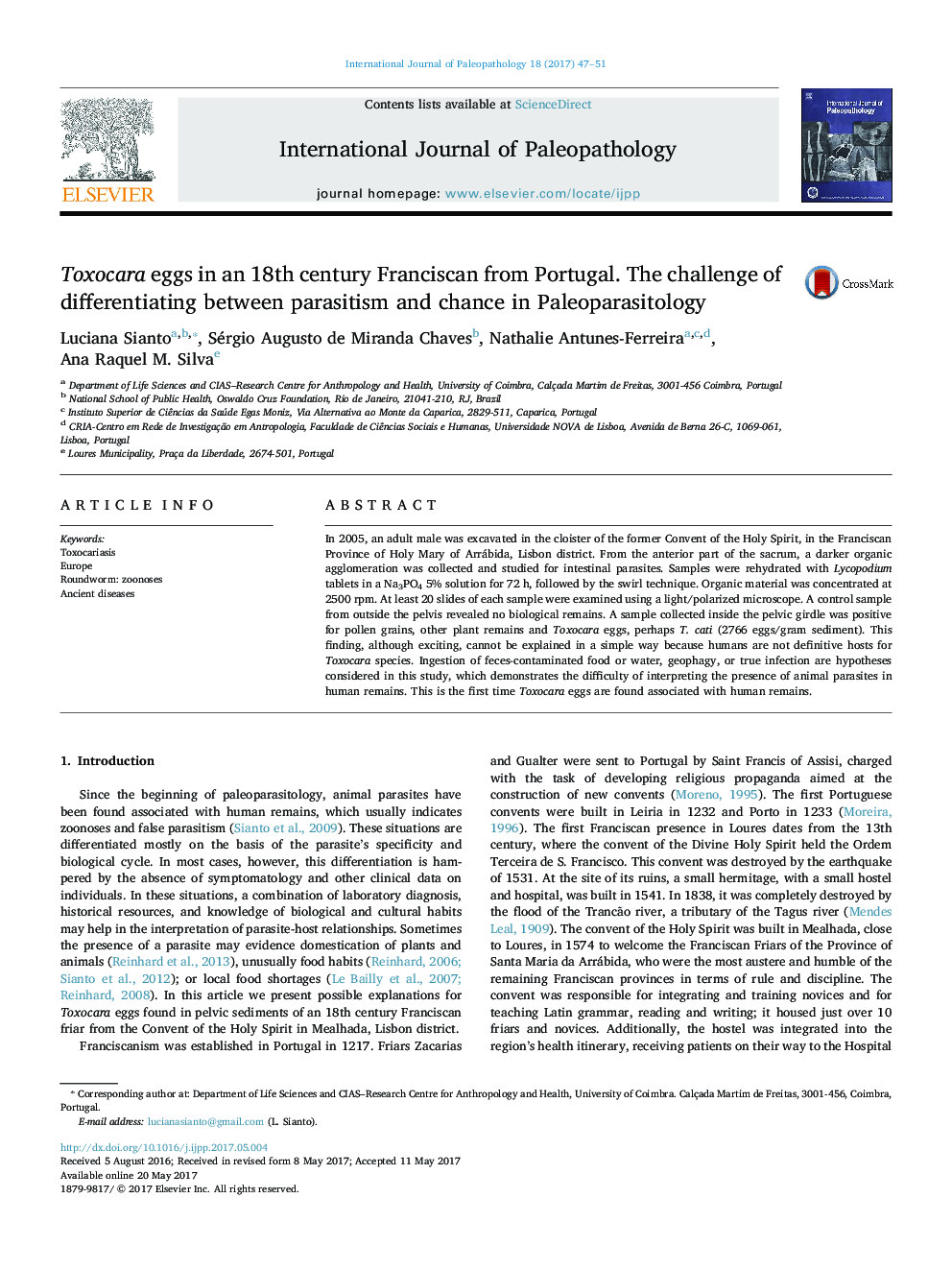| Article ID | Journal | Published Year | Pages | File Type |
|---|---|---|---|---|
| 6463049 | International Journal of Paleopathology | 2017 | 5 Pages |
In 2005, an adult male was excavated in the cloister of the former Convent of the Holy Spirit, in the Franciscan Province of Holy Mary of Arrábida, Lisbon district. From the anterior part of the sacrum, a darker organic agglomeration was collected and studied for intestinal parasites. Samples were rehydrated with Lycopodium tablets in a Na3PO4 5% solution for 72Â h, followed by the swirl technique. Organic material was concentrated at 2500Â rpm. At least 20 slides of each sample were examined using a light/polarized microscope. A control sample from outside the pelvis revealed no biological remains. A sample collected inside the pelvic girdle was positive for pollen grains, other plant remains and Toxocara eggs, perhaps T. cati (2766 eggs/gram sediment). This finding, although exciting, cannot be explained in a simple way because humans are not definitive hosts for Toxocara species. Ingestion of feces-contaminated food or water, geophagy, or true infection are hypotheses considered in this study, which demonstrates the difficulty of interpreting the presence of animal parasites in human remains. This is the first time Toxocara eggs are found associated with human remains.
